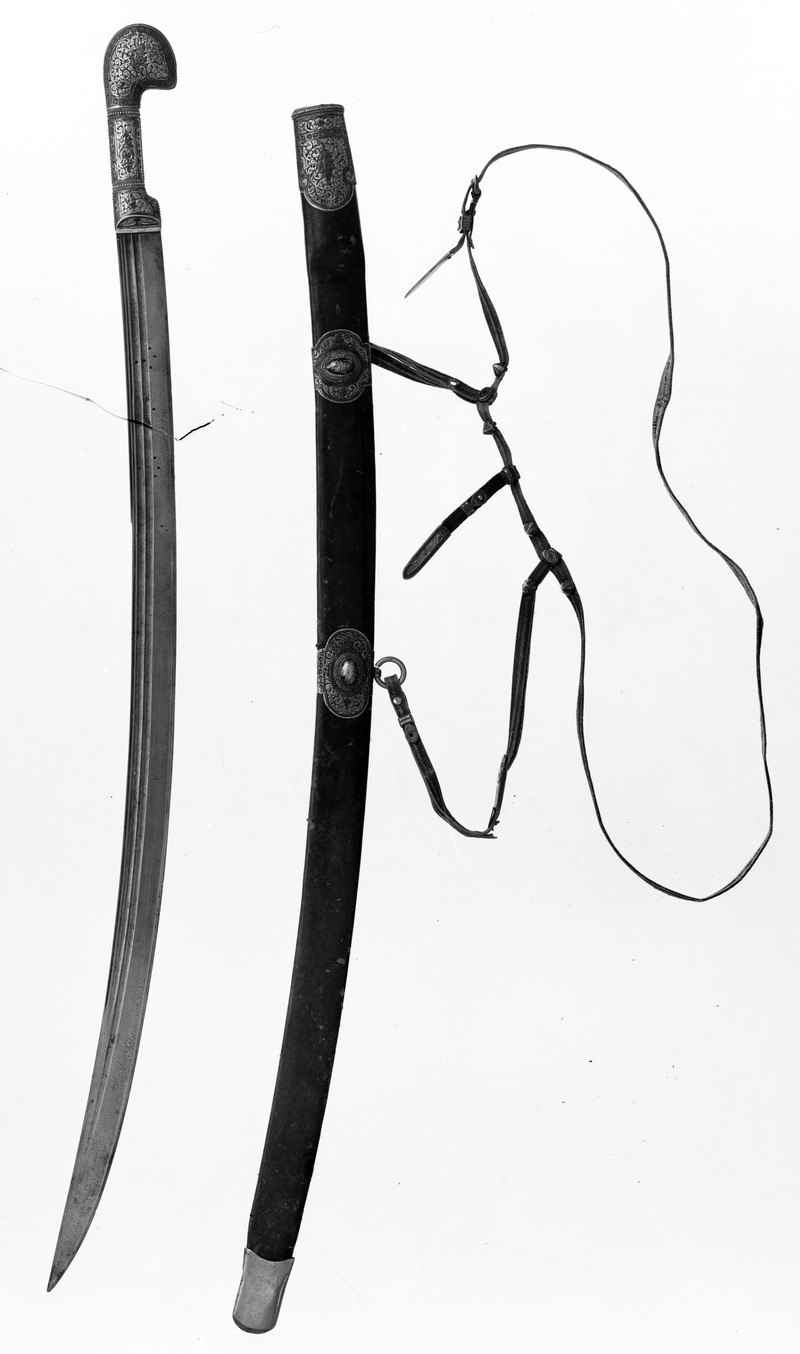There is something to be said for a weapon that come come a place that is punishing and cold, and no we're not talking about viking axes. The Caucasus mountains that form the border of modern day Georgia and Russia are wind swept, cold, and also home to tribes, towns, and even some nomadic people with roots as far away as the middle east.
 |
| Reproduction of an 1881 pattern 'Cossack' shashka |
In the late 17th century, a pattern of curved, saber like sword called the Shashka emerged from the region, and with it emerged a reputation for both the weapon itself, and the people who wielded them. The actual use of the weapon by its native makers is something that is lost to history, but when the Russian army faced it during the military conquest of the region (1817–1864), they were so impressed by the saber-like sword that they adopted it into their ranks. Full-time cassock regimens were issued regulation Shashkas as part of their filed kit, starting in the early 1830s. The weapon was even issues under the soviet government in 1927, a design that continued until 1946, just after the end of the Great Patriotic War (WW II).
The Shashkas blade is usually between 30 and 40 inches long, and is regarded as a fast, light weapon capable of quick movements and deep cuts. The tip is pointed, but the thrust is generally considered a secondary attack. The design is characterized by a fuller running the length of the weapon that both strengthens it, and allows for lighter construction. Usually the lower two thirds of the back half of the blade are flat to facilitate gripping or holding in defensive maneuvers. Handles included round with no hilt, but also electorate baskets in some examples. The majority of weapons surviving today are military issue types made under contract by the Russian military before the fall of the Tsar.
A Caucasian/Circassian shashka (below)

His Lordship Ivo Blackhawk
Kingdom of Ansteorra
"Long Live the King!"
No comments:
Post a Comment